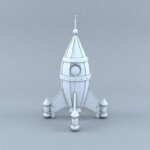Navigation CNC Machine Price in India (2024): Investment in Accurate Manufacturing
The landscape of India’s manufacturing industry is undergoing a major shift, exacerbated by initiatives such as “Made in India” and increasing global demand for precise parts. The core of this development is the use of computer numerical control (CNC) processing technology. Whether you’re a stereotypical shop who wants to expand functionality, an OEM setting up a new production line or an entrepreneur taking the risk of working in manufacturing, understand Indian CNC machine price 2024 It is crucial. It’s not just a list price; it’s about making a smart investment that will drive your productivity, quality and profitability in the coming years.
Complex price matrix: What is the cost of a CNC machine?
Label "Typical" Due to various variables, the price of CNC machines in India is impossible. The range from hundreds of crores to tens of crores is expected to extend. Key determinants include:
-
Number of axes: core differentiator
- 3-axis (milling/turning): Most entry points. Ideal for simple geometry and 2.5D machining (prism parts). Price range (2024): Basic Vertical Machining Center (VMC) Begins Rs 10-200a powerful industrial model with larger work envelopes and features from Rs 2.5 lakh to Rs 6 lakh. Lathes follow a similar wide range. Popular for mold bases, fixtures and bulk processing of standard components.
- 4 axis: Add rotation around the X-axis (A-axis) so that machining is done on multiple sides of the part without re-fixing (index or continuous). Price range (2024): Start of entry-level 4-axis VMC Rs 3.5 lakhhigh-performance models surpass Rs 9 million. Necessary for components such as impellers, camshafts and complex profiles.
- 5 axis (simultaneous): The pinnacle of complex, free form geometric shapes (aerospace, defense, medical implants). Allows cutting from any angle in a single setting. Price range (2024): This is where a major jump occurs. The entry-level machine may start nearby Rs 600-800,000mainstream industrial-grade machines lead €120 crore – 250 crore Brackets and high-end large-capacity systems can exceed Rs 5 crore. The complexity of machine kinematics and control directly affects cost.
-
Machine size and work envelope: Due to increased material, structural requirements and a powerful drive system, larger machines capable of handling larger workpieces (heavier, wider, longer) are naturally more costly.
-
Spindle power and tool changer: Higher spindle RPM (for high-speed machining), greater torque (for heavy-duty materials) and ATC (autoconverter) with larger capacity (24, 40, 60+ tools) greatly increase the cost. HSK tool support and CAT/BT will also affect the price.
-
Control system: The brain of the machine. Basic FANUC controllers are common in standard machines. Advanced systems such as Siemens, Hayden Hayne or Mitsubishi offer excellent motion control, user interface, probe integration and complex programming capabilities to a premium.
-
Build quality and origin:
- Premium international brands (Japan, Germany, Switzerland, USA): Example accuracy, reliability, lifespan, strong support network. Command maximum price (Typically used for 5-axis Rs 15 crore, the large/top model is significantly higher).
- Founded in Taiwan/Korea Brand: Provides excellent performance, good reliability, faster local support than purely imported items, and more valuable than top brands. ((Usually Rs 7 million – Rs 2 crore + 5 axes).
- Indian Manufacturer: Rapidly develop and focus on cost-effectiveness. Quality and capability are improving, but there are huge differences. Best for 3-axis and some 4-axis applications (Usually, depending on the specifications, the range of €20 lakh – 12 lakh). Emerging players are entering the 5-axis market.
-
Technology and features:
- Automation integration: pallet changer, robot load, rebar feeder (for lathes).
- Advanced software: Integrated cam or simulation software package.
- Probe system: The probes set and inspected in the touch machine.
- Direct drive technology: eliminate rebound, higher accuracy and speed.
- Linear motor driver: extreme speed and accuracy.
- High pressure coolant system.
- Market Power and Supply Chain (2024 Details):
- Electricity Cost: Significantly affects OPEX and machine selection (demand for energy-saving motors).
- Import Responsibilities and GST: Machines imported with CKD/SKD kits attract different responsibilities compared to fully built units. GST is 18%. Fluctuations in customs policies affect landing costs.
- Forex fluctuations: With most core components imported (controls, spindles, guides), Lu is weaker and will overstate the price against USD/EUR/JPY. Volatility in 2023 has had a significant impact until 2024.
- localization: The increase in domestic manufacturing, while beneficial in the long term, may still involve importing key components, initially partially offsetting the cost benefits.
- Super competition: The huge number of brands and dealers in India will create positive pricing pressure, especially on the 3/4 axis, but also drive value-added products.
Beyond Machine Sticker Price: True Cost of Ownership (TCO)
Smart buyers go beyond the initial invoice:
- Installation and debugging: Rigging, leveling, power connection, utility settings (coolant, air), initial software settings/calibration. Depending on the complexity, it can range from Rs 50,000 to Rs 5 lakh.
- Tools and Tools: Mass cutting tool, tool holder, Vises/fixation device. A machine set up, it is easy to reach Rs 2 lakh – Rs 2 lakh.
- software: CAD (Rs 1 lakh to Rs 1 lakh), CAM (Rs 1 lakh to Rs 1 lakh), simulation, management software.
- Infrastructure: Enhanced flooring, adequate power supply (transformer?, DGS?), compressed air system, dedicated cooling system (sometimes required), cabinet/floor.
- Operator training: Formal training at OEM or third-party institutes is essential, not optional. Well-trained operators lead to collapse and slow productivity.
- Maintenance Contract (AMC/CMC): It is crucial to minimize downtime and ensure longevity. Typically, 8-12% of the machine cost per year is spent on active packaging.
- Consumables: Coolant, lubricant, filter, spare parts. Don’t underestimate the operating costs.
- Operating Cost: Power consumption (important!), compressed air.
Why your choice is important: Keeping features consistent with your needs
- A large number of, simple parts? A strong 3-axis factory or turn center provides the best ROI. Reducing the cost of each part is key.
- Prototype/low volume, high complexity? The 5-axis capability is critical for machine complex parts in a single setup, which reduces lead time and fixture costs despite higher machine investment. Accuracy and nuance are crucial.
- Mass production of medium and complex parts? The 4-axis machine achieves an excellent balance with obvious flexibility on the 3-axis without the full 5-axis cost.
- Materials Important: Hardened steel or inconels require machines with high stiffness, torque and spindle power and push toward higher-level models.
Great Advantage: Accurately grasping complexity
In the environment, requiring faster part turnover speeds have increasing geometric complexity, and basic machining methods hit the wall. This is an advanced place Five-axis CNC machining The transition from luxury to strategic necessity. Greglight CNC machining Standing at the forefront of this technology.
We not only have five-axis machines; we have mastered them. Our investment goes beyond equipment – it is engineering expertise, proprietary machining strategies and a strong commitment to precise control. This mastery enables us to:
- Solved the stubborn metal parts problem: Use 3 or 4-axis machining in a single setup to handle geometry, ensuring excellent accuracy and finish integrity.
- Streamline production: Eliminates many secondary operations and complex, error-prone fixes and significantly compresses lead times.
- Provide a true one-stop service: From original inventory to finished parts – Our features include comprehensive Post-processing and completion (surface treatment, heat treatment coordination, painting, paint, assembly).
- Provides versatility and speed of materials: Able to process various metals effectively. Our Agile workflow Truly transformed into Quick turnaround time For demanding projects.
The most important thing is: precise investment, not just electricity
In 2024, buying CNC machines in India requires careful navigation, a dynamic market driven by global supply chains, technology leaps and local competition. The price spectrum is broad and carefully defined by axis counting, capabilities, origins and features.
Crucially, purchasing decisions must go beyond the initial price tag. factor Total Cost of Ownership (TCO)strictly analyze your Specific application requirements And predict ROIAnd rigorously evaluate Manufacturer/dealer reputation and support infrastructure.
For complex geometric shapes that require unparalleled accuracy and efficiency, Five-axis CNC machining Become a clear solution. Despite the large investment in machines, long-term benefits of long-term quality, reduced lead time and design freedom are transformative.
Whether you are investing capital yourself or leveraging advanced capabilities with such precise partners Greglight CNC machiningaligning your manufacturing strategy with the right CNC technology is crucial for today’s competitive environment to thrive. Don’t just be machine parts; engineer solutions.
Conclusion: Make an informed choice
Understanding CNC machine prices in India in 2024 gives you the ability to make reasonable strategic decisions for the future of manufacturing. consider:
- Your core requirements: Match the machine’s functions (axis, size, power supply) with the parts you make and the materials you use.
- Total financial status: Diligently calculating TCO – installation, tools, training, software and ongoing costs are significant.
- Supplier reliability: Prioritize the provision of strong technical support, training programs and ready-to-use spare parts within India.
- Future Prevention: Evaluate whether a slightly higher investment now (e.g., choosing a spindle RPM with a 4-axis or higher that exceeds 3 axes) can handle potential future demand without immediate upgrades.
- Complexity requires 5 axes: When faced with complex geometry, single-piece setting processing is required, excellent surface finish and reduced lead time, with advanced manufacturing experts (e.g. Greglight CNC machining Become a strategic advantage. We eliminate the burden of direct investment while providing world-class accuracy and speed.
The Indian CNC market provides solutions for all sizes and budgets. By focusing on real requirements, TCO and partnership quality, you can turn a large amount of capital expenditure into a powerful engine of growth and innovation.
FAQ (FAQ): Indian CNC Machine Price 2024
-
Q: What is the absolute cheapest CNC machine I can buy in India?
- one: You may find a Chinese-made desktop/small desktop 3-axis CNC router that can be found from around lightweight engraving/composite materials. Rs 30,000-80,000usually imported directly or through a niche importer. However, their capabilities and durability in industrial metal cutting are extremely limited.
-
Q: How much does it cost "Typical" 3-axis VMC cost in India?
- one: "Typical" Depend on usage. Easy and lightweight Indian or entry-level Taiwanese model for lightweight production Rs 15-25. Powerful, mainstream industrial-grade machines with standard features (such as ATC) in Rs 30 million scope. Larger and higher spec models move upwards.
-
Q: What drives the price increase of 5-axis machines?
- one: Complexity! Adding two rotary axes requires a complex mechanical design (kinematics), overshoot components (bearings, encoders), incredibly complex control software to manage simultaneous 5-axis motion, advanced thermal compensation and extensive calibration. The development, building quality and controlling hardware/software constitutes advanced.
-
Q: Are “second-hand” CNC machines obviously cheaper? Are they a good choice?
- one: Yes, a second-hand machine (correctly refurbished/auctioned) can be 30-60% cheaper than a new machine. advantage: Reduce upfront costs. shortcoming: Hidden issues are more risky, limited/unwarranty, potentially obsolete, unknown service history, difficult to get support/parts. A thorough inspection is required for an expert before purchasing. Only for buyers with strong internal maintenance skills.
-
Q: What is the minimum cost for me to budget for startup besides the machine?
- one: As a rough estimate, at least 20-30% Basic Machine Price: Basic Tool Holders and Tools (Minimum value of Rs 20,000 to 50,000), standard CAD/cam holder (Rs 30,000-50,000), installation/rigging/utilities settings (Rs 10,000-30,000), initial operator training (Rs 50,000 – Rs 2 lakh). Add more information for advanced tools/software/automation.
-
Q: How much electricity is running a CNC machine?
- one: Highly variable (machine power level, duty cycle, local KWH rate). Medium 3-axis VMC (15-20KVA spindle) runs for 16 hours a day Rs 30,000 to 60,000 per year Electricity (depending on ₹/kWh). Larger machines, especially 5-axis, consume much more. Electricity costs are the main operating expenses.
-
Q: Can CNC machines in India be financed?
- one: Yes. Most major machine tool distributors pair with NBFC, leasing companies and financing banks. Lease and loan options are commonplace to account for 70-90% of machine costs. Interest rates vary widely based on reputation and market conditions. Expect to often require a large down payment.
- Q: Why choose Greatlight for complex parts instead of buying a 5-axis machine?
- one: Need to buy high-end 5-axis CNC Invest tens of millions more Plus a lot of ongoing costs (maintenance, tools, software, operator). Greglight offer Visit now state of the art 5-axis function and deep machining expertise No capital burden. We focus on effectively overcoming complex metal parts challenges, handling post-processing and providing fast turnaround, ideal for prototyping, low and medium volume production or parts that require excellent accuracy, you may not be able to achieve cheapness in-house. It’s about strategic access to bleeding – edge capabilities.

















